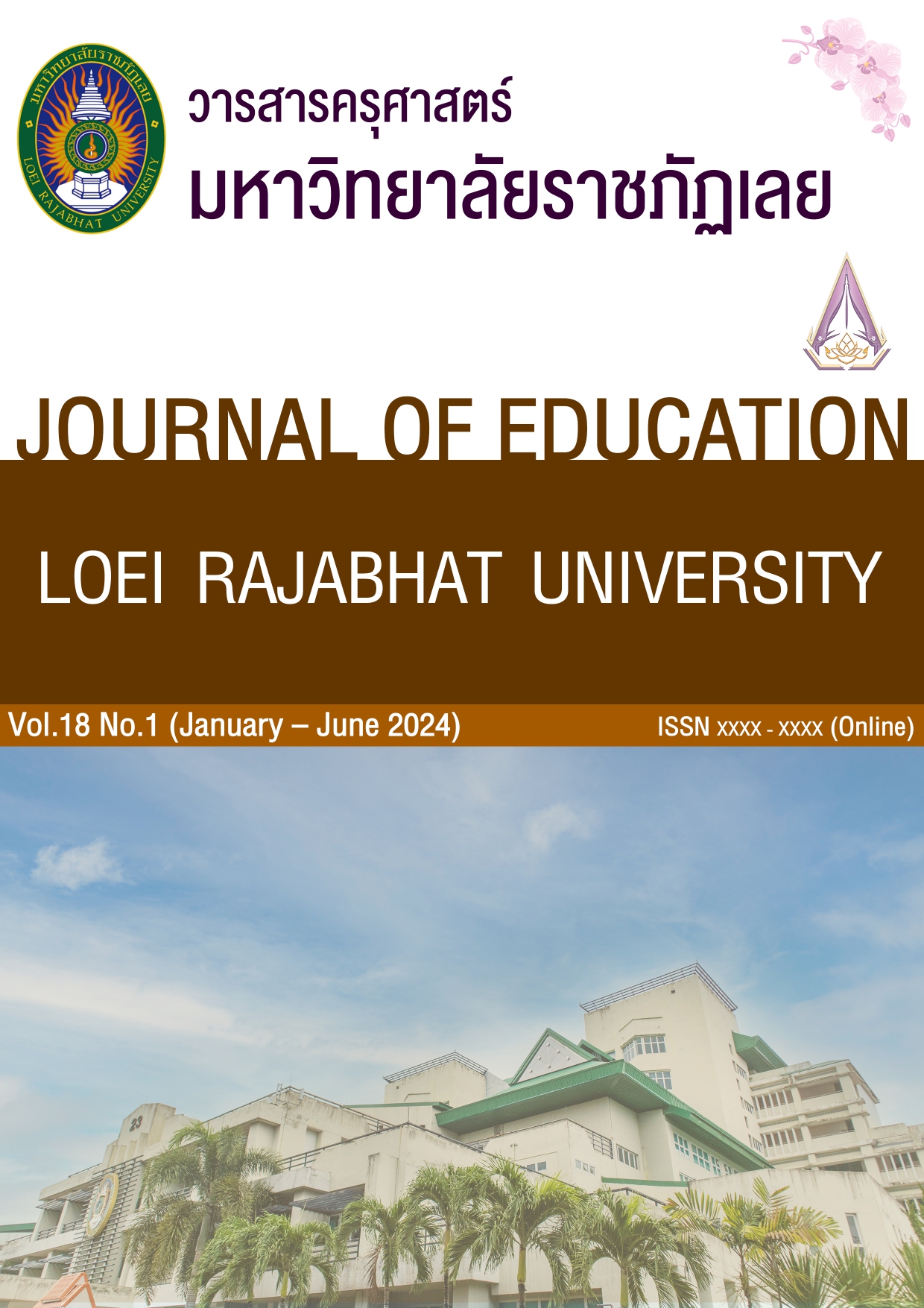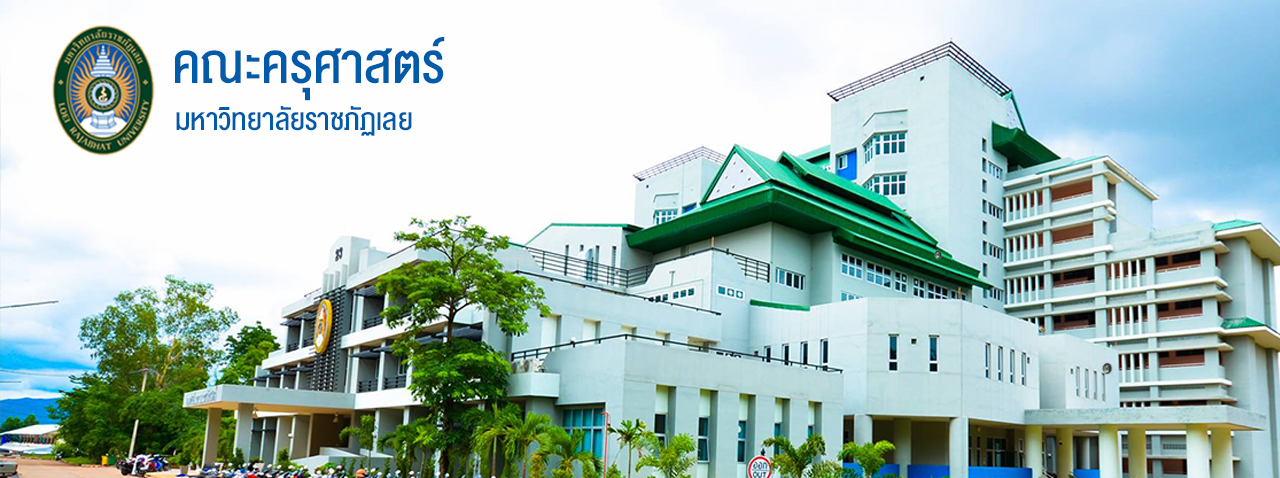Development of mathematical reasoning abilities on ability matrix using multimedia to assemble the inductive method for grade 11 students
Keywords:
multimedia, inductive learning management, reasoning ability, matrixAbstract
The objective of this research was to develop the mathematical reasoning ability of a grade 11 student on the matrix by having the students score at least 70 percent in their mathematical reasoning ability and pass the criteria by at least 70 percent. of The sample included 40 grade 11 students from Kham Muang School in Kham Muang District, Kalasin Province, who participated in the study via cluster random sampling in the first academic year 2022.The research tools were the learning management plan on a matrix using multimedia for an inductive and mathematical reasoning test. Statistics for data analysis were percentage, mean, and standard deviation. The findings on the development of mathematical reasoning abilities on a matrix indicated that the students had the ability to reason mathematically.There was an average score of 15.40 from 20 people, representing 77.00 percent, and there were 35 students who passed the criteria, representing 79.57 percent of the total number of samples. which is higher than the specified criteria.The results of the research were as follow: for the results
in the development of mathematical reasoning abilities In the matrix, it was found that the students had the ability to reason mathematically. There was an average score of 15.40 out of 20 representing 77.00 percent, and there were 35 students passing the criteria, representing 79.57 percent of the total number of samples. which is higher than the specified criteria
References
กระทรวงศึกษาธิการ. (2561). การวัดและประเมินผลอิงตามมาตรฐานการเรียนรู้ ตามหลักสูตรการศึกษาขั้นพื้นฐาน พุทธศักราช 2544 กลุ่มสาระการเรียนรู้คณิตศาสตร์..: โรงพิมพ์องค์การรับส่งสินค้าและพัสดุภัณฑ์.
สมเดช บุญประจักษ์. (2550). การพัฒนาศักยภาพทางคณิตศาสตร์ของนักเรียนชั้นมัธยมศึกษาปีที่ 1 โดยใช้การเรียนแบบร่วมมือ.[ปริญญาดุษฎีบัณฑิต](คณิตศาสตร์). : บัณฑิตวิทยาลัย มหาวิทยาลัยศรีนครินทรวิโรฒ.
ทิศนา แขมมณี. (2554). ศาสตร์การสอนองค์ความรู้เพื่อการจัดกระบวนการเรียนรู้ที่มีประสิทธิภาพ (พิมพ์ครั้งที่ 4). สำนักพิมพ์แห่งจุฬาลงกรณ์มหาวิทยาลัย.
ธเนศ อินเมฆ. (2559). การศึกษาผลสัมฤทธิ์ทางการเรียยนคณิตศาสตร์ ของนักเรียนชั้นมัธยมศึกษาปีที่ 1 เรื่อง การบวกและการลบจำนวนเต็ม โดยการใช้สื่อประสม โรงเรียนวรราชาทินัดดามาตุวิทยา จังหวัดปทุมธานี. มหาวิทยาลัยเกษตรศาสตร์.
ประสาท เนืองเฉลิม. (2563). วิจัยการเรียนการสอน. สำนักพิมพ์จุฬาลงกรณ์มหาวิทยาลัย.
อัมพร ไชยฤทธิ์. (2559).การเปรียบเทียบผลสัมฤทธิ์ทางการเรียน การคิดวิเคราะห์และเจตคติต่อการเรียน ระหว่างเรียนคณิตศาสตร์ นักเรียนชั้นประถมศึกษาปีที่ 4 ระหว่างการจัดกิจกรรมการเรียนรู้
แบบอุปนัยร่วมกับนิรนัยและแบบปกติ. วารสารศึกษาศาสตร์ มหาวิทยาลัยมหาสารคาม, 10(พิเศษ),1058-1071.
อุไรวรรณ คำเมือง. (2563). ผลการจัดกิจกรรมการเรียนรู้แบบอุปนัยที่มีต่อมโนทัศน์ทางคณิตศาสตร์ เรื่อง ทฤษฎีบทพีทากอรัส ของนักเรียนชั้นมัธยมศึกษาปีที่ 2. วารสารมนุษย์ศาสตร์และสังคมศาสตร์มหาวิทยาลัยนครพนม, 50(10), 46-54 .
วิชัย เสวกงาม. (2557). ความสามารถในการให้เหตุผล ความสามารถที่จำเป็นสำหรับผู้เรียนในศตวรรษที่ 21. วารสารครุศาสตร์, 2, 215-216.
บุญสนอง วิเศษสาธร. (2562). ผลของการจัดการเรียนรู้โดยใช้ปัญหาเป็นฐานต่อความสามารถในการแก้ปัญหา
และผลสัมฤทธิ์ทางการเรียนวิชาคณิตศาสตร์ของนักเรียนชั้น. สำนักพิมพ์จุฬาลงกรณ์มหาวิทยาลัย.
สถาบันส่งเสริมวิทยาศาสตร์และเทคโนโลยี. (2555). การวัดประเมินผลคณิตศาสตร์. โรงพิมพ์ครุสภาลาดพร้าว.
Downloads
Published
How to Cite
Issue
Section
License

This work is licensed under a Creative Commons Attribution-NonCommercial-NoDerivatives 4.0 International License.
เนื้อหาและข้อมูลในบทความที่ตีพิมพ์ในวารสารครุศาสตร์ มหาวิทยาลัยราชภัฏเลย ถือเป็นความคิดเห็นและความรับผิดชอบของผู้เขียนบทความโดยตรง กองบรรณาธิการวารสารไม่มีส่วนในความคิดเห็นและความรับผิดชอบใดที่เกี่ยวข้องกับบทความดังกล่าว ทั้งนี้ บทความที่ได้รับการตีพิมพ์ในวารสาร ฯ ถือเป็นลิขสิทธิ์ของวารสาร








